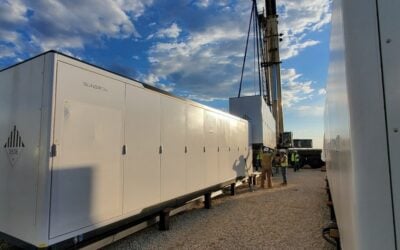
There is a four-fold difference between how much energy storage the US Department of Energy (DOE) forecasted would be deployed by 2040 before the Inflation Reduction Act (IRA), and how much it now forecasts.
“Before IRA, our national labs were projecting about 50GW of energy storage buildout by 2040. Post-IRA, our analysis, and pretty much everyone else’s, is now projecting more than 200GW by 2040,” said Carla Frisch, principal deputy director at the DOE’s Office of Policy.
Enjoy 12 months of exclusive analysis
- Regular insight and analysis of the industry’s biggest developments
- In-depth interviews with the industry’s leading figures
- Annual digital subscription to the PV Tech Power journal
- Discounts on Solar Media’s portfolio of events, in-person and virtual
Or continue reading this article for free
Frisch was speaking during a keynote address – ’18 Months On: The Impact of the IRA on the Energy Storage Industry’ at this week’s Energy Storage Summit USA 2024 in Austin, Texas, put on by our publisher Solar Media.
As Energy-Storage.news reported this week, the US grew its battery energy storage system (BESS) – the technology of choice for the vast majority of projects today – to 17GW by the end of 2023, according to trade body American Clean Power Association’s (ACP) latest figures. 2023 saw the US deploy 7.9GW of new capacity, double the prior year, ACP said.
The DOE’s Frisch said that deployments would roughly double in 2024 to 15GW, though was citing a lower estimate for 2023 deployments of 6.5GW. She noted that the DOE’s forward forecasts acknowledged that some projects in the interconnection queue, which is much larger, would fall out and not get built.
The keynote address primarily went through the various measures that the IRA has taken to give its clean energy sector a boost. The most relevant for energy storage are the 45x manufacturing tax credit, which pays US$35 per kWh for cell production and another US$10 for battery pack assembly, and the investment tax credit (ITC) for 30% of downstream projects’ capital expenditure, with the option to grow that to 70% with various adders.
Long-duration energy storage (LDES) is also a specific goal for the government department. “We have the goal to reduce storage costs by 90% for storage systems that deliver 10-plus hours of duration. We’re projecting a massive need for LDES by 2050.”






